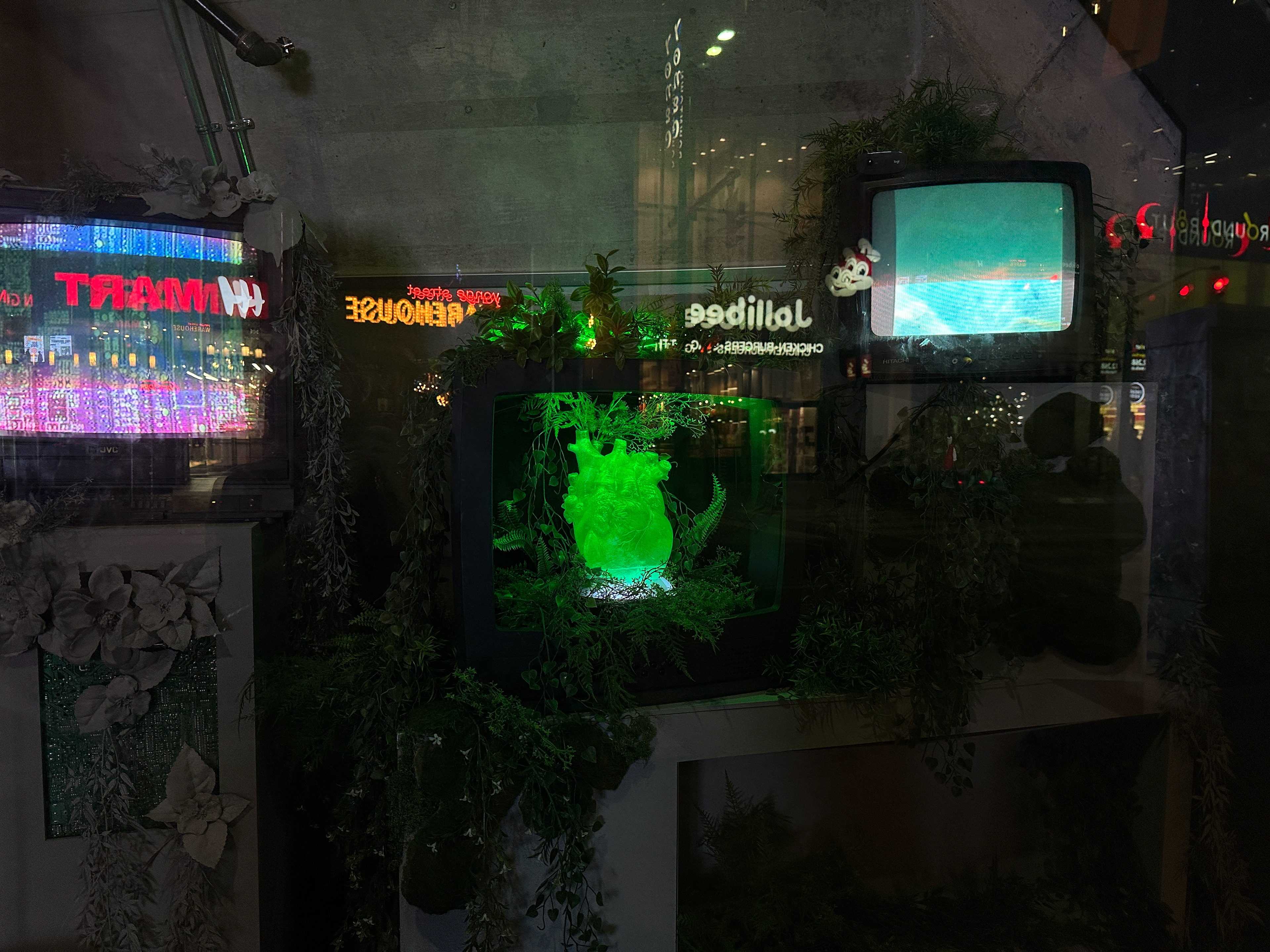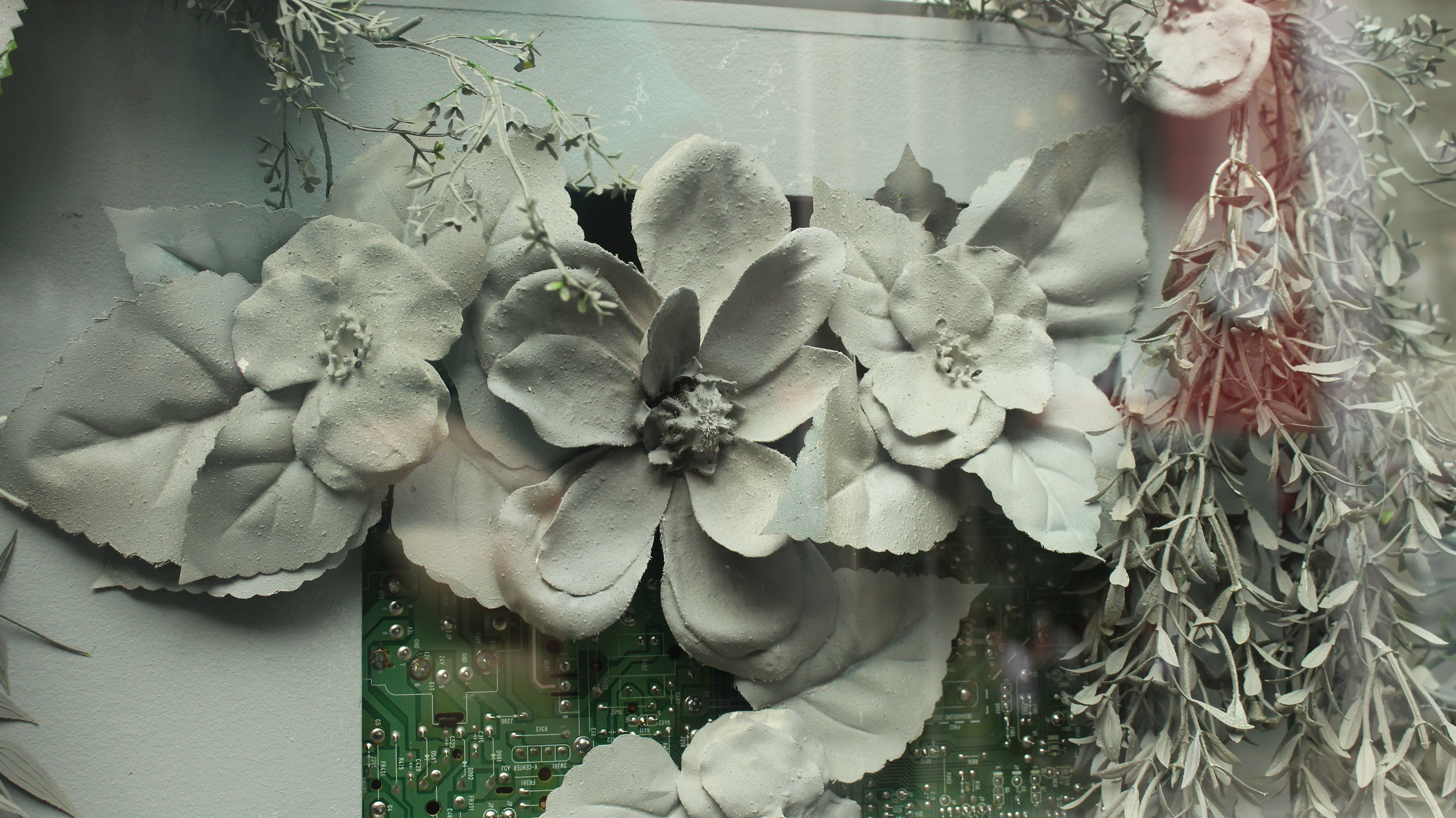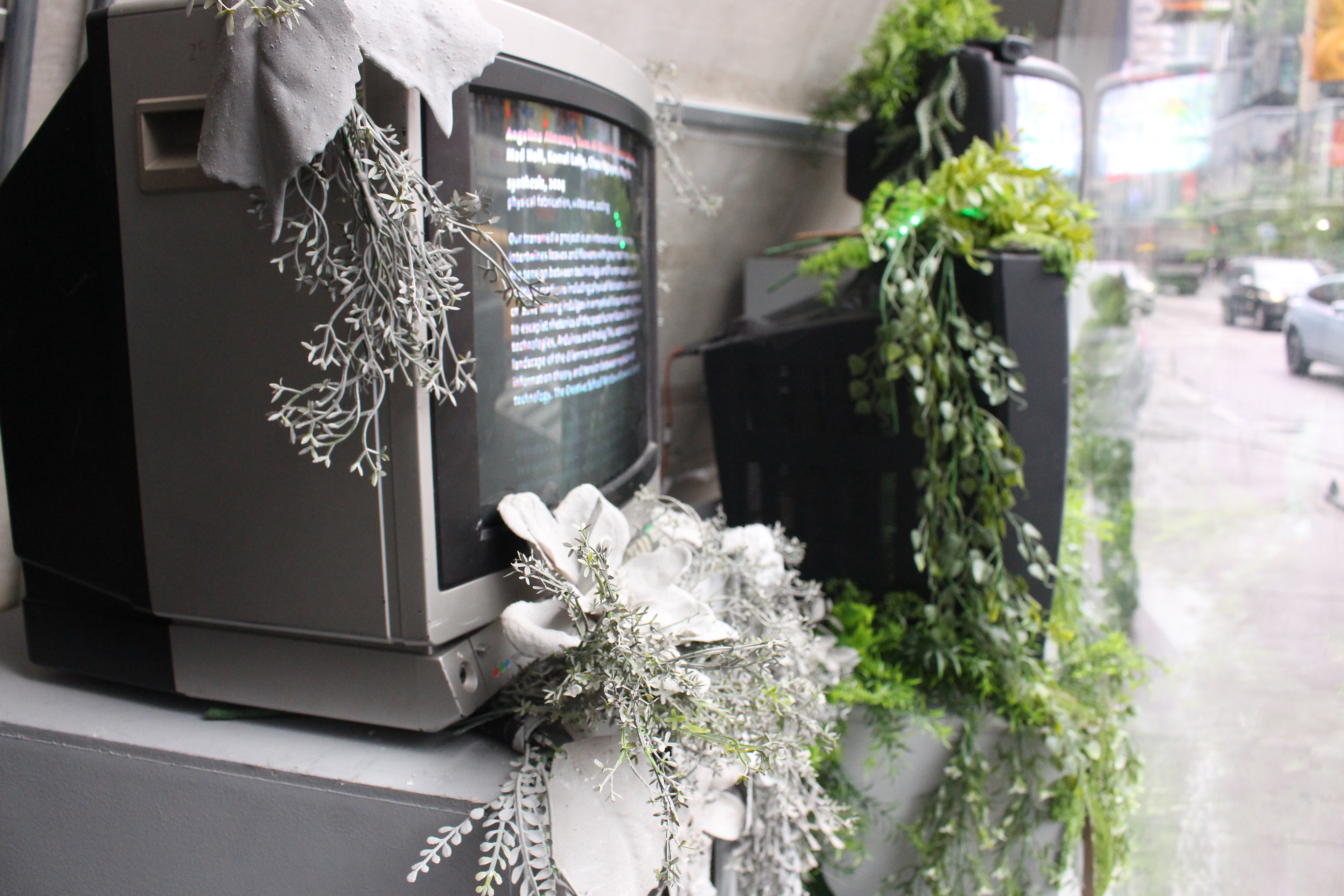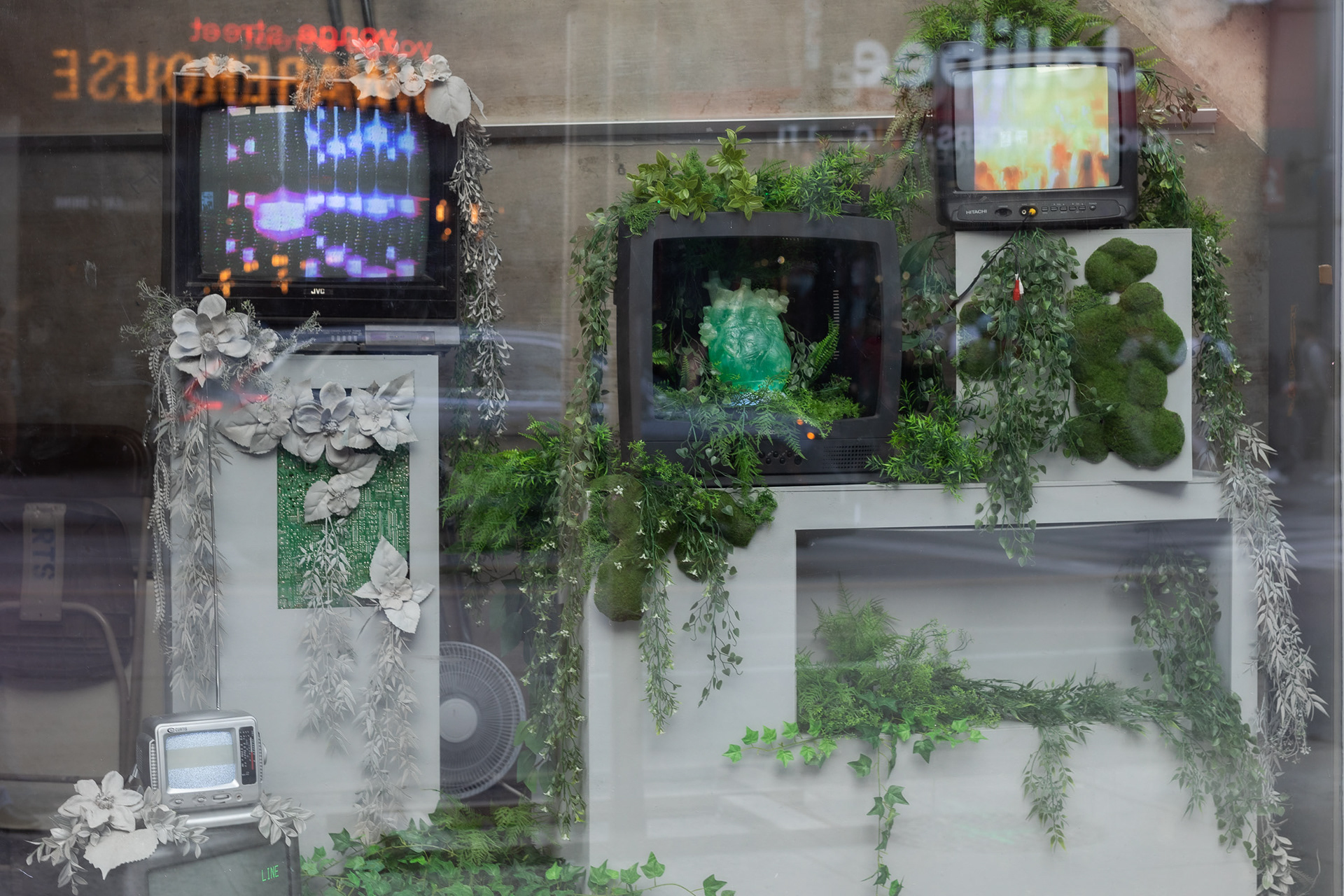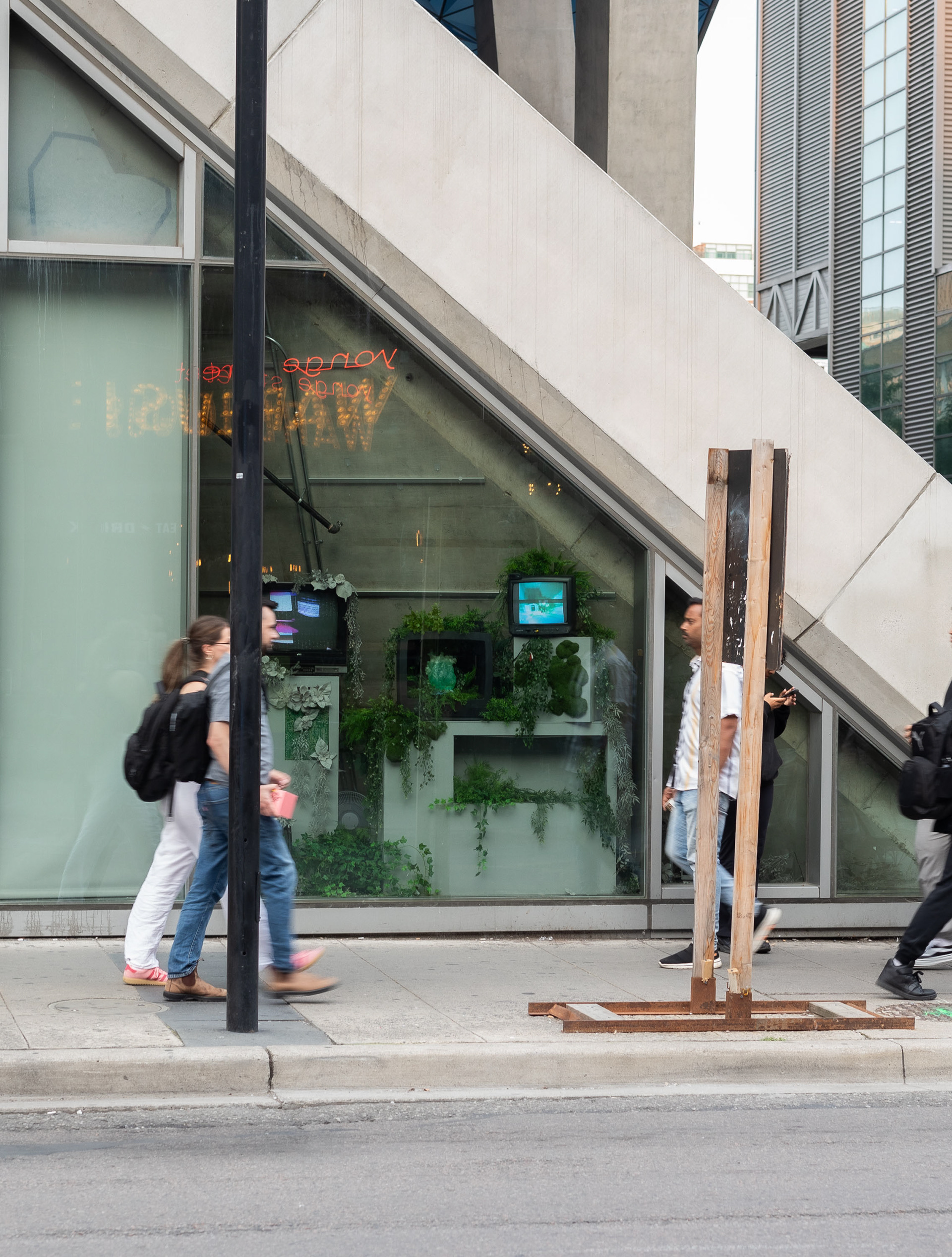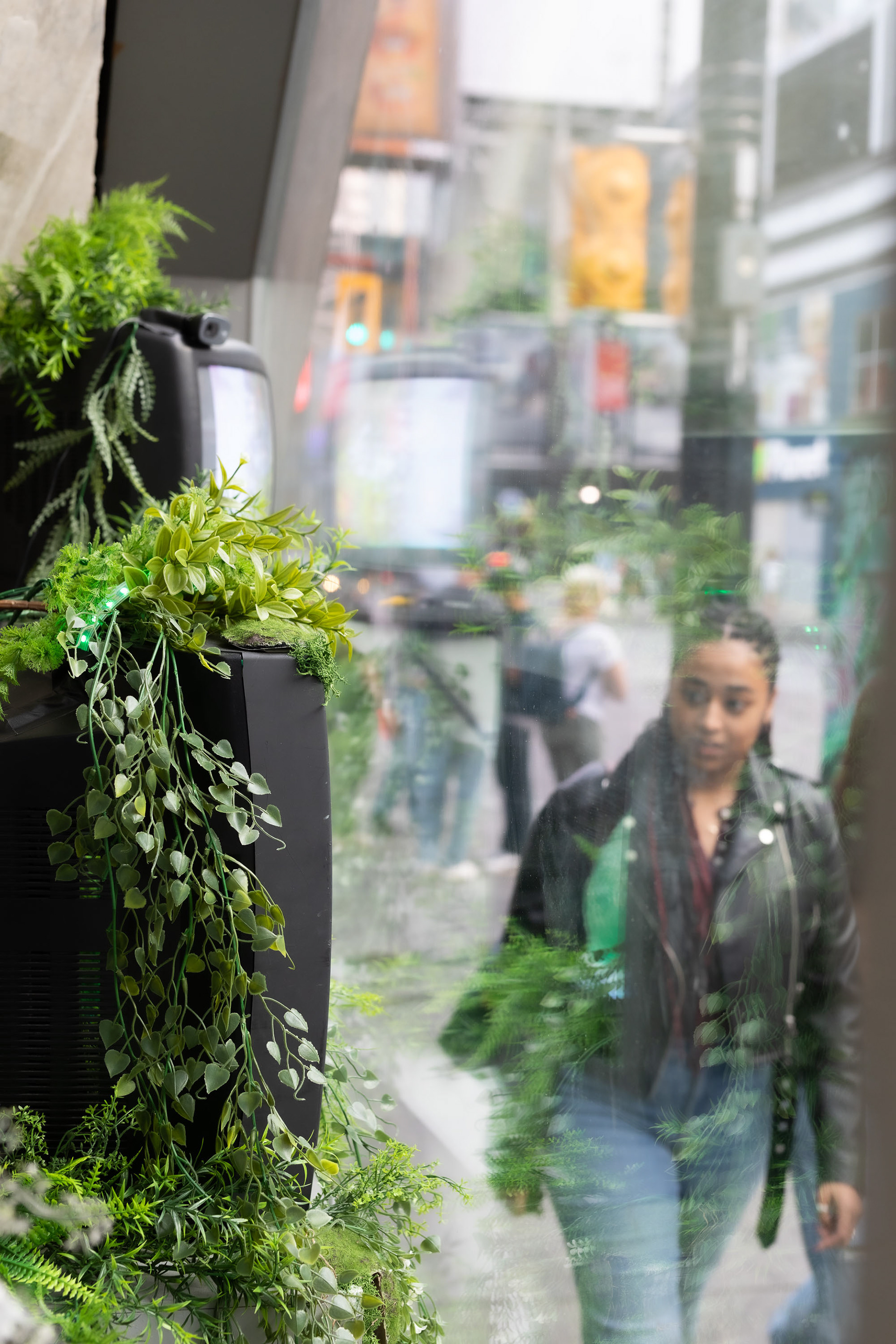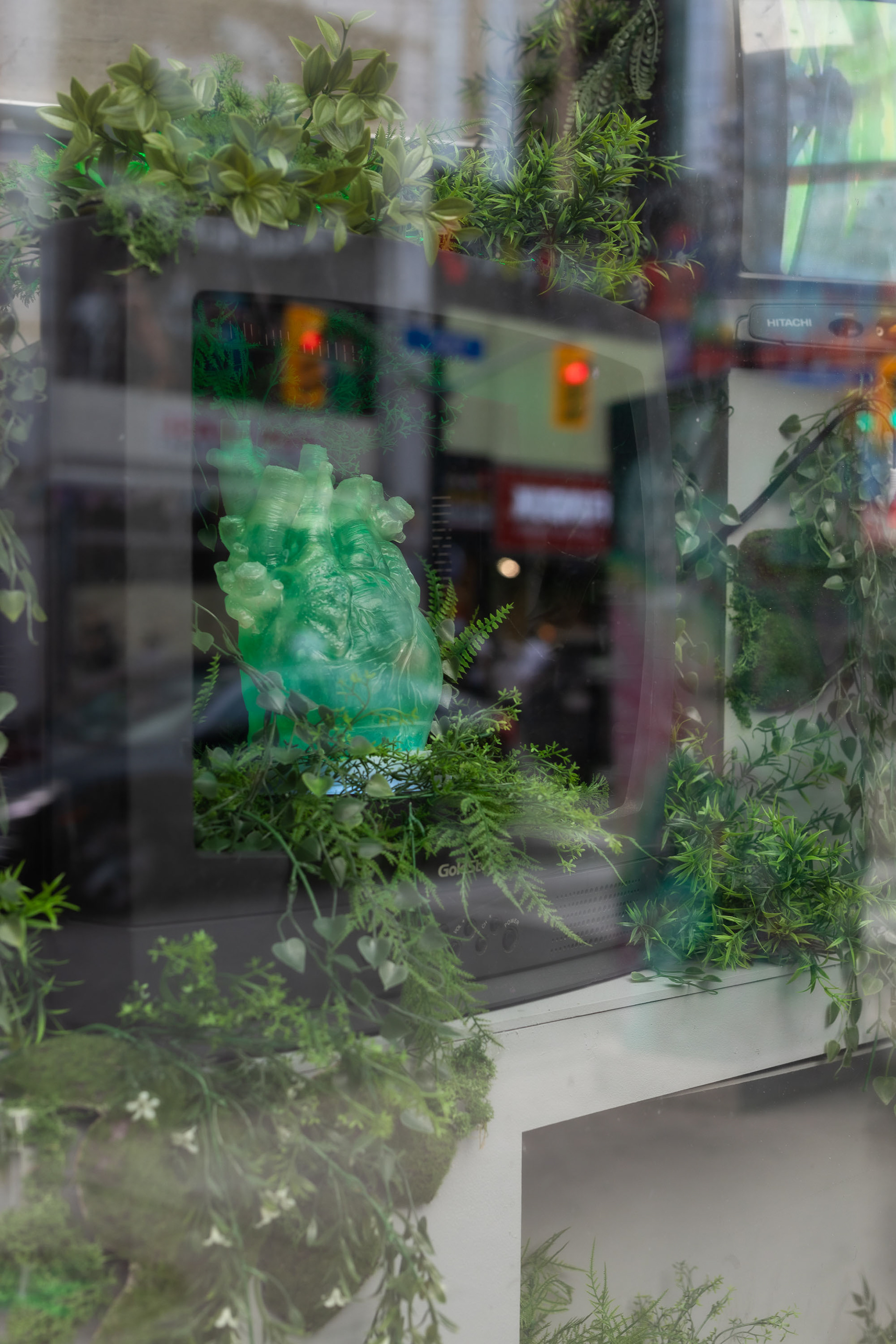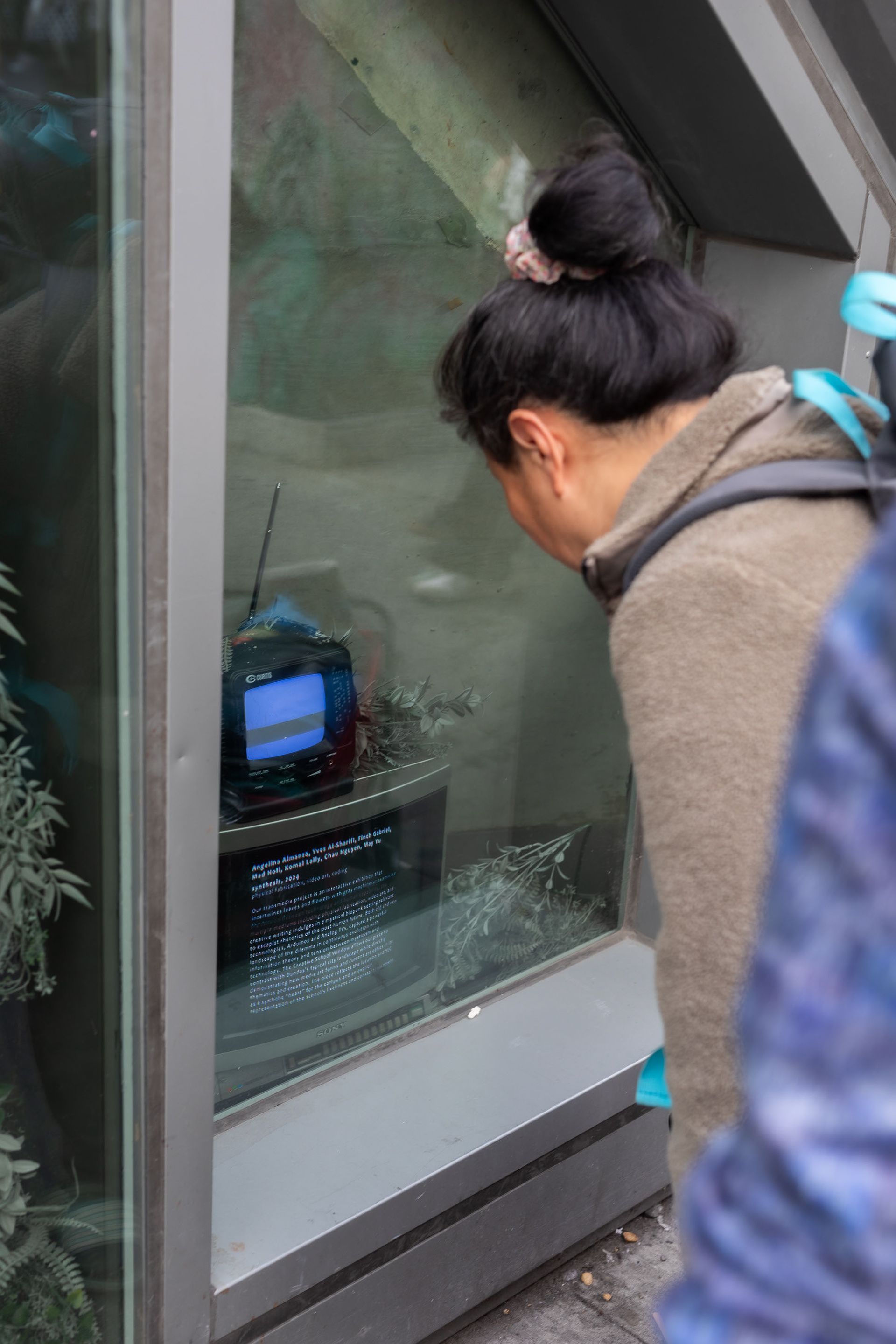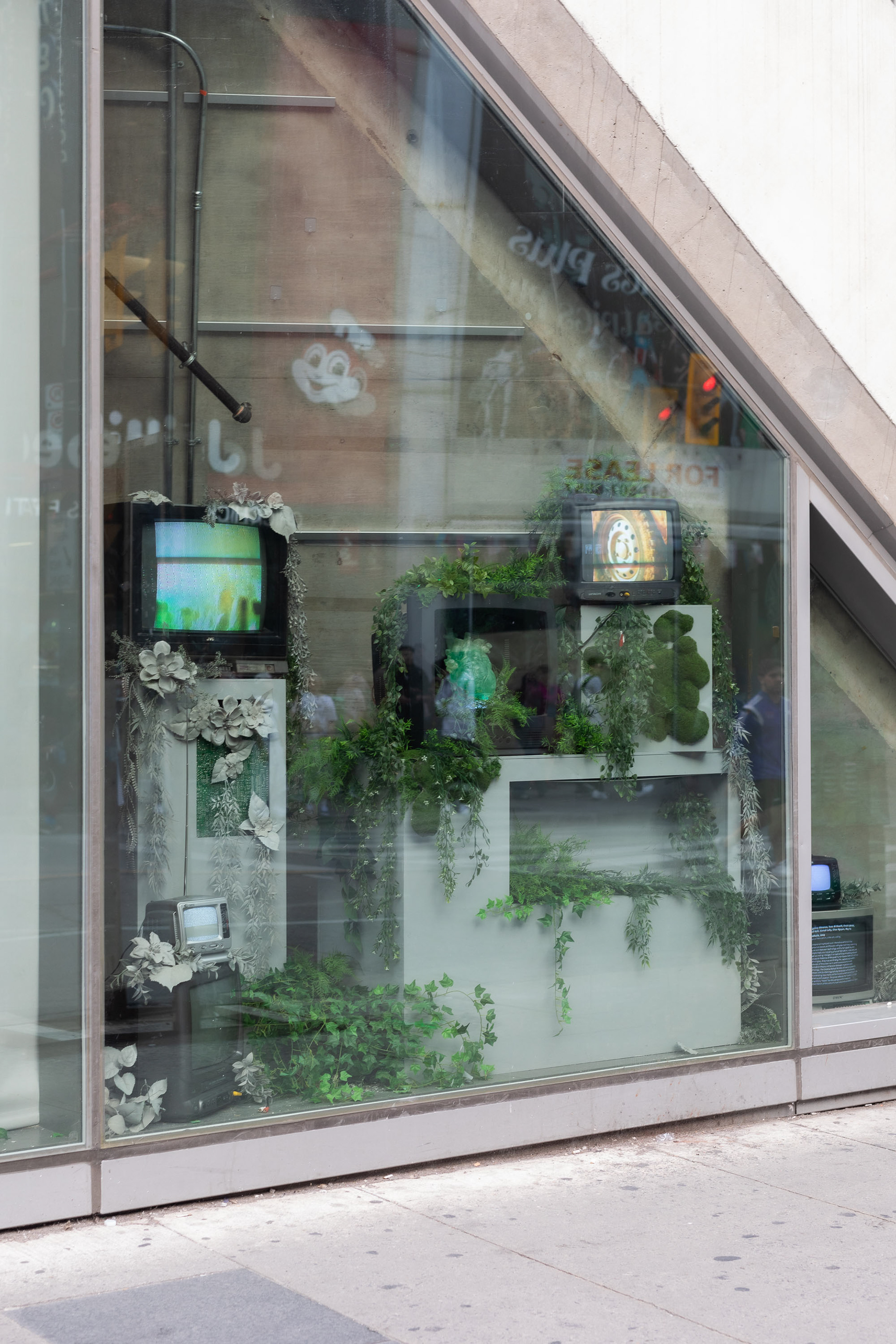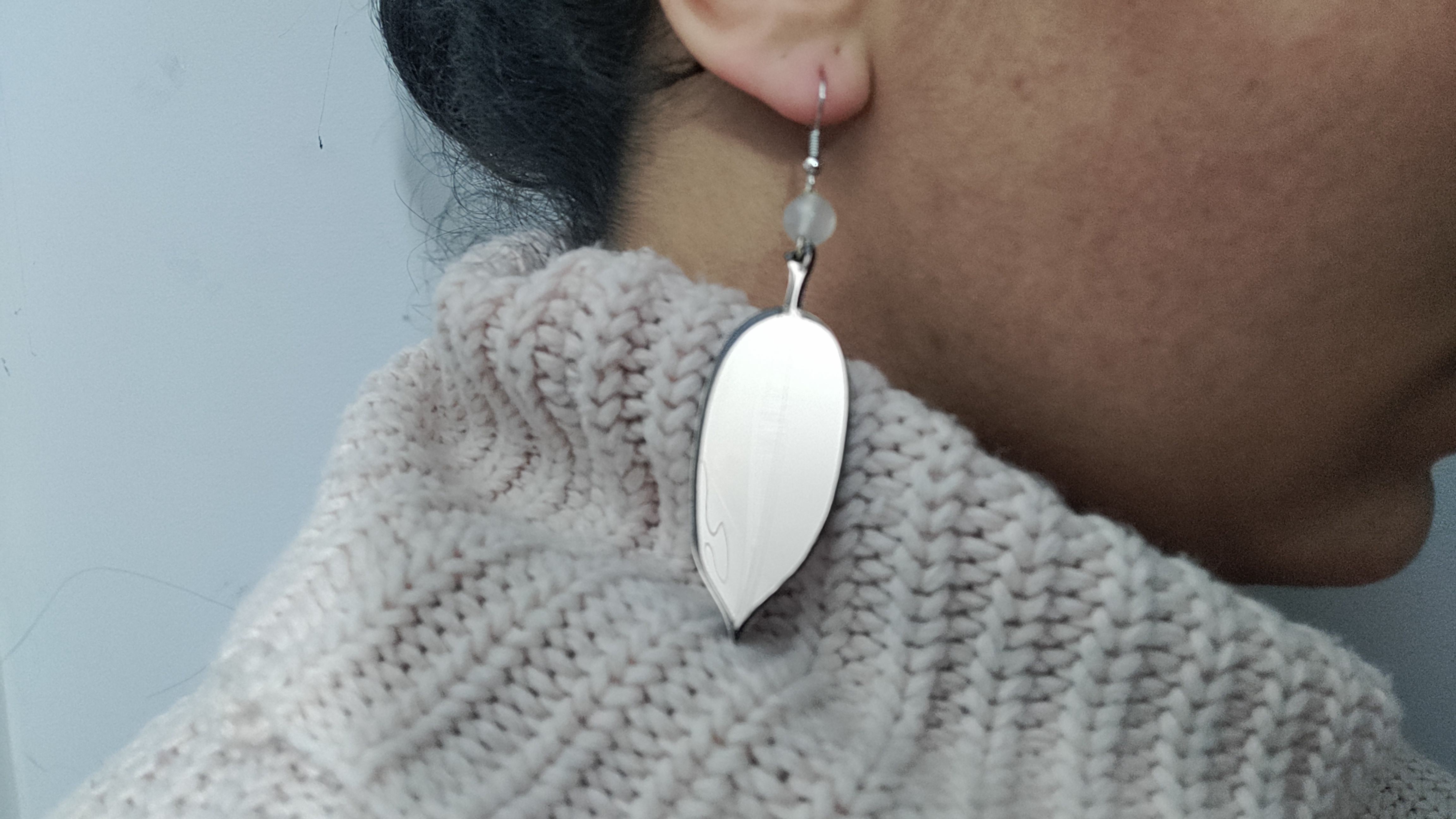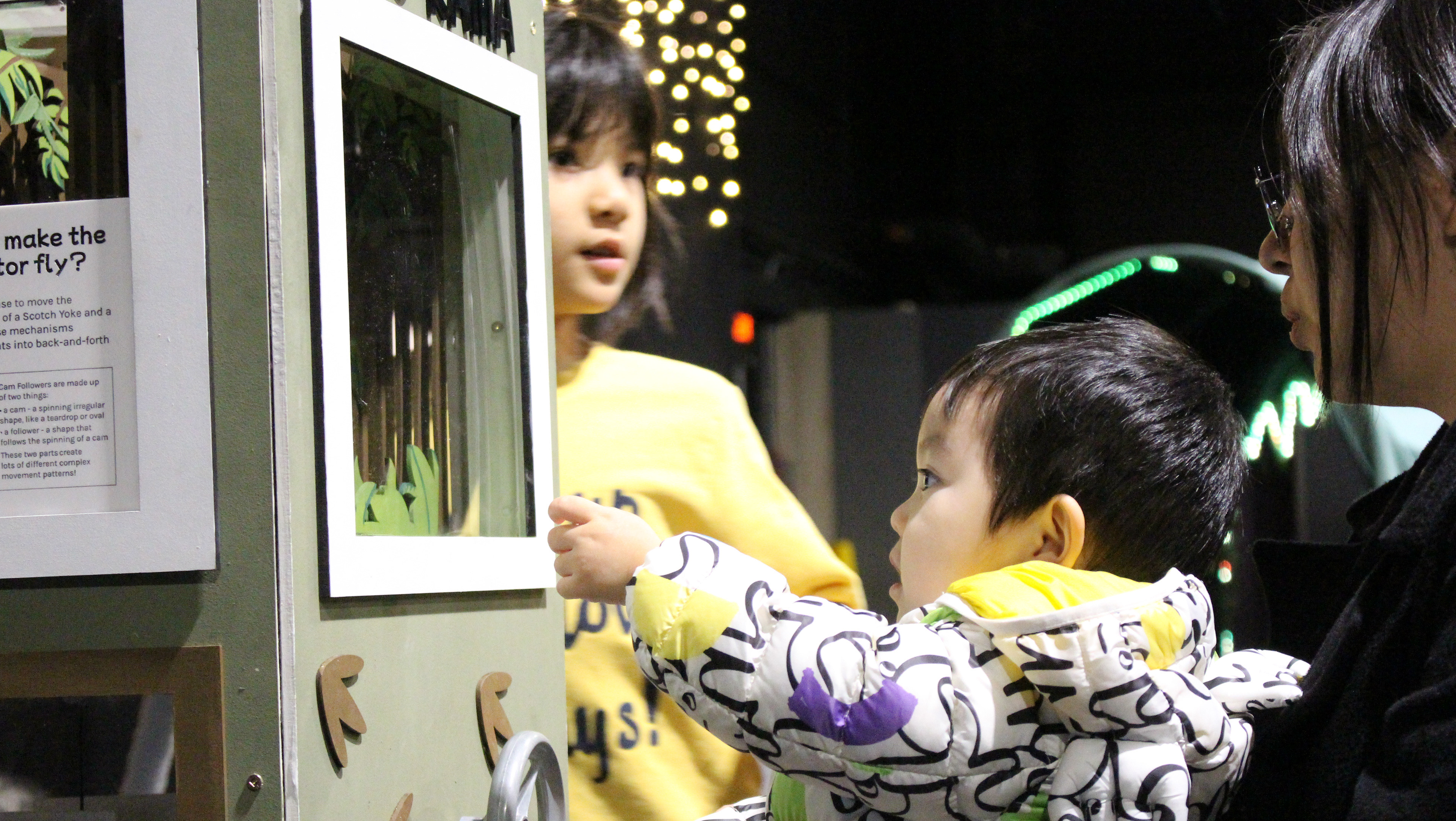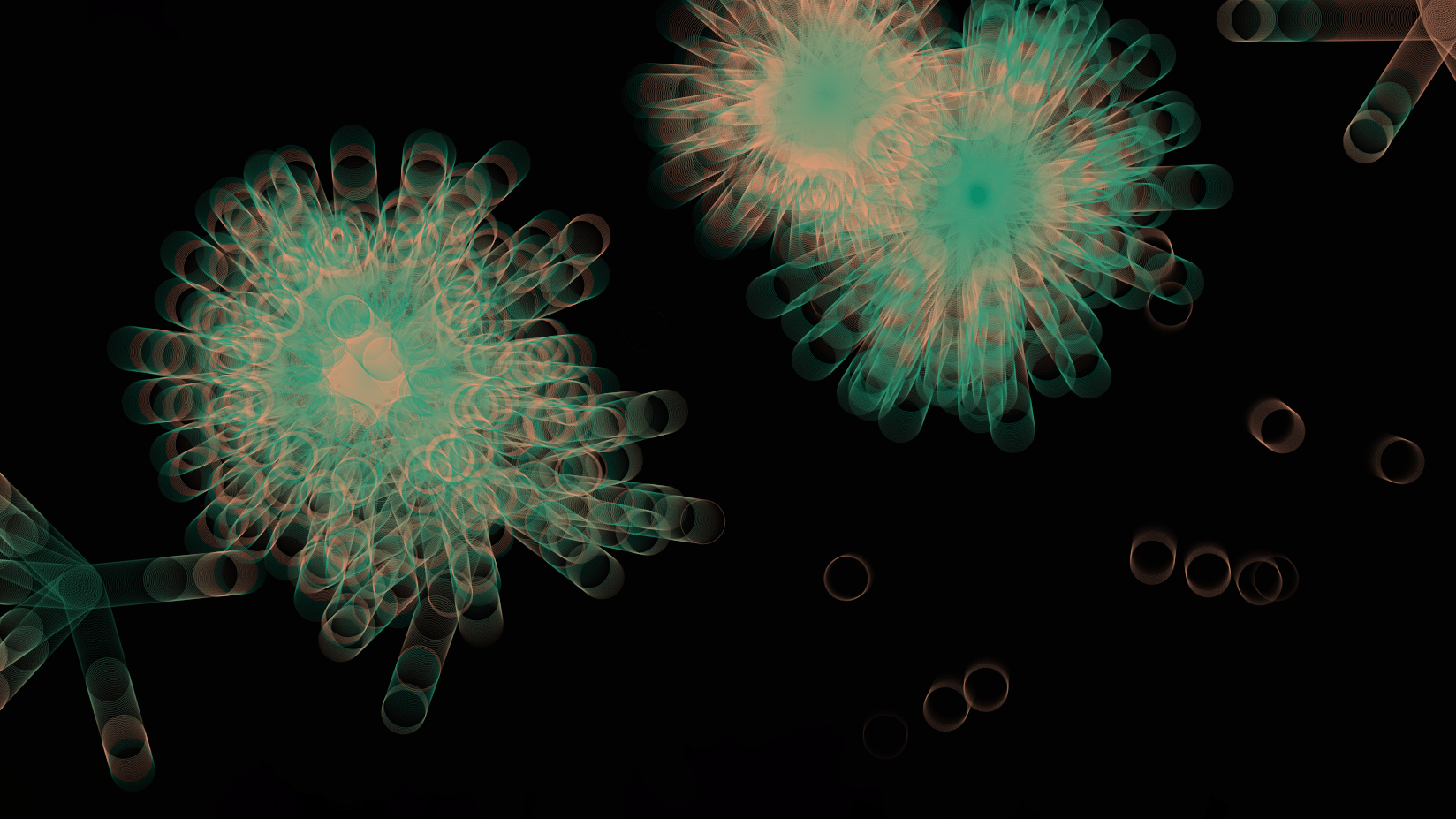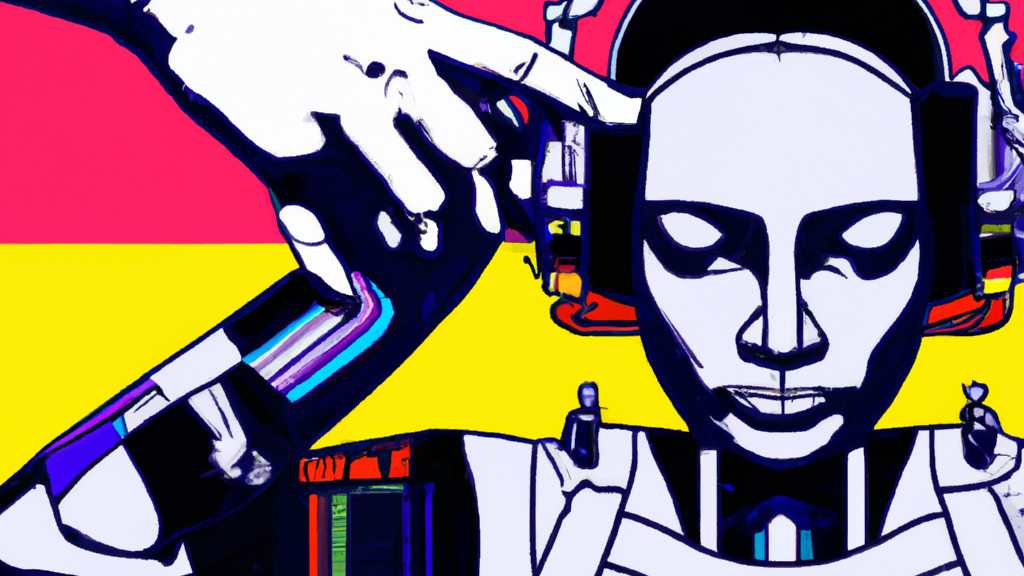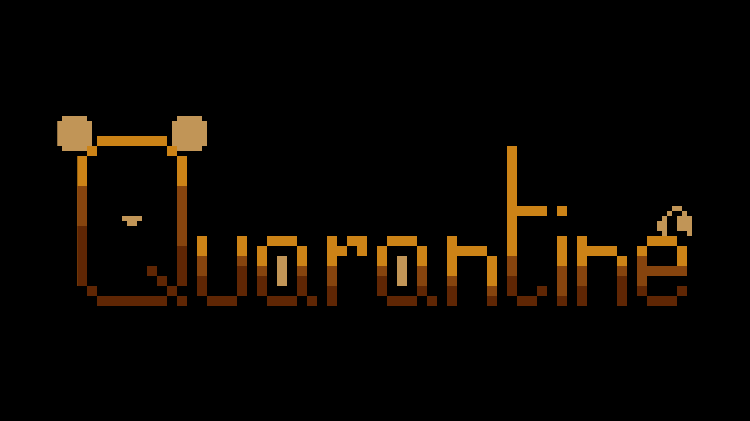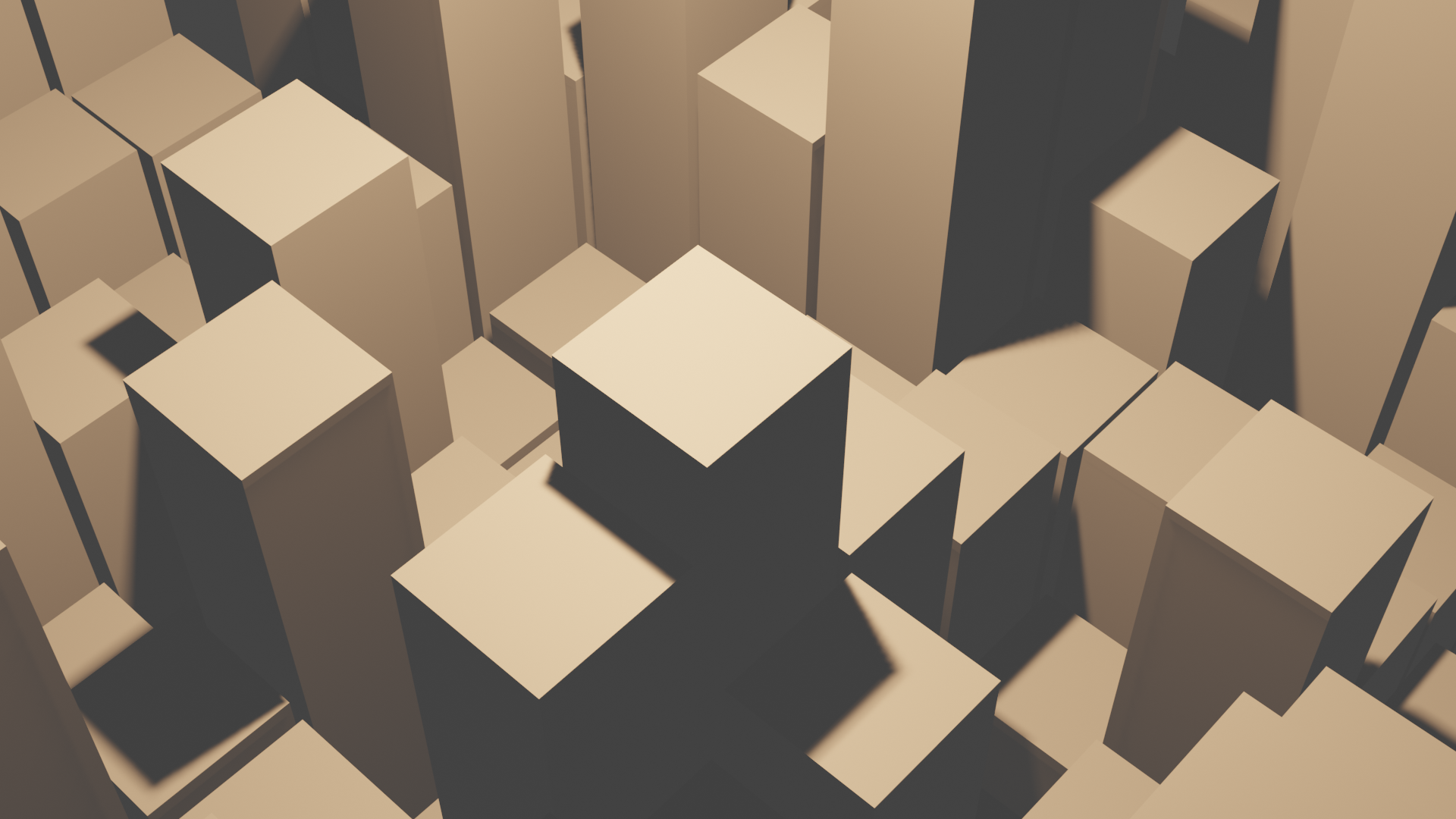Created by the artist collective "networked: artifacts" - including Angelina Almanza, Yves Al-Sharifi, Finch Gabriel, Mad Holl, Komal Lally, Chau Nguyen, and May Yu
synthesis is an interactive networked art installation that illustrates the symbiotic relationship between human presence, technology, and living systems, highlighting the vital role of art in societal wellbeing. Informed by site-specific live data collection, the work seeks to subvert the typical connotations of human presence, offering instead that a higher volume of people leads to a collective vitality. By distilling the traffic of a location to a single, leverageable value, synthesis creates community-informed interactions, reminding audiences of the intrinsic power found not only in numbers, but also in our existence as creatives.
Surrounded by lush greenery, reclaimed CRT TVs flit between peaceful, naturalistic footage & abrupt, industrial videos. The sequencing of these clips is informed by the ratio of motion detected at the chosen site. The current iteration of synthesis is on exhibit at Toronto Metropolitan University, with the public-facing work housed in the window exhibit of the Sheldon & Tracy Levy Student Learning Centre. Thus, sixteen passive infrared (PIR) sensors are placed throughout the creative hub of the school, Rogers Communication Centre (RCC), covertly collecting live human data and communicating it, across campus, to the exhibition space.
The artistic presence in the school is then refined into a single percentage, impacting the behaviours & content of the central artwork. Broadcasted onto the vintage TVs, the data-informed video art progressively changes as the ratio of motion increases. When the system detects little to no traffic, the video art plays frenetically spliced utilitarian cinematography. With more traffic - more life - the video feed progressively adopts a softer pace, featuring nature-centric scenes shot in home-video style (such as ponds, wildlife, etc.). The gentler flow seeks to subvert the chaos of human surplus - highlighting the vitality of creatives in a desensitized, tech-oriented society.
The centerpiece of the installation, from which all the life & greenery emerges, is an anatomical resin heart filled with green liquid. As the ratio of motion surpasses a specified threshold, physical computing re-animates the dormant heart. Pulsating lighting animations emanate from the gutted TV in which it resides and the heart itself bubbles to life, driven by a relay-activated pump. The choreography parallels human biology and illustrates how the heart is a conduit for the system’s vitality. This notion is mirrored within the auxiliary staging elements wherein the foliage cascading across the support structures becomes petrified by the surrounding industrial landscape the further it strays from its lifesource.
Alongside the implicit participation through the motion sensors, synthesis also offers passersby the opportunity to explicitly involve themselves in the installation through a covertly placed Computer Vision interface. As they approach the exhibition area, their presence is detected - a live camera feed overtakes the existing video art and broadcasts their likeness onto the CRT TVs, highlighting audience members as a vital part of the art.
Connecting two locations across campus, the work reflects the inhabitants within the “heart” of the artistic community, alive through their never-ending movement. Through its use of nostalgic & naturalistic elements, synthesis inspires a return to simpler times. The work invites us to believe that perhaps our mere presence alongside one another is sufficient to bring life, beauty, and moments of reflection back to the otherwise stark surroundings of day-to-day life.

